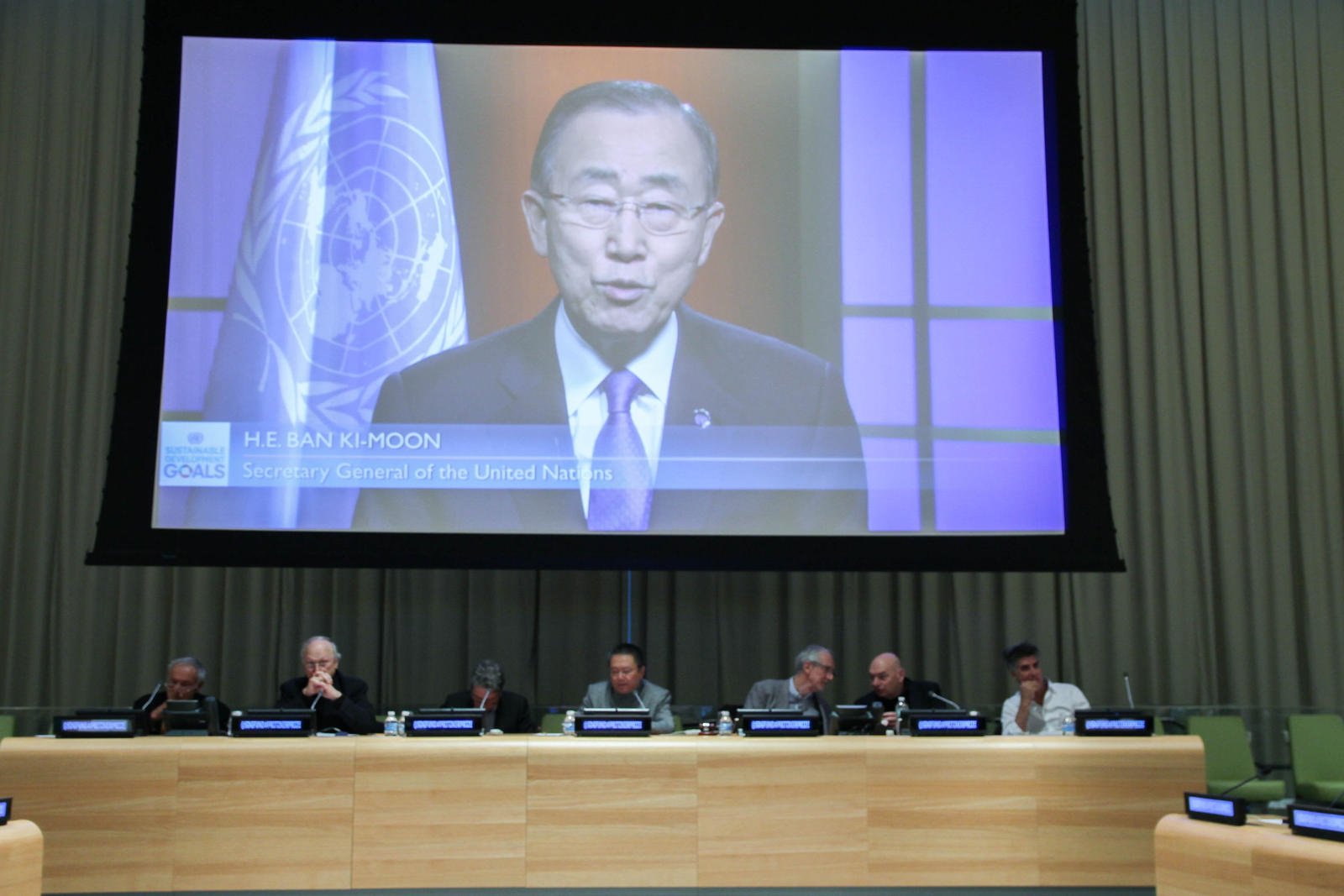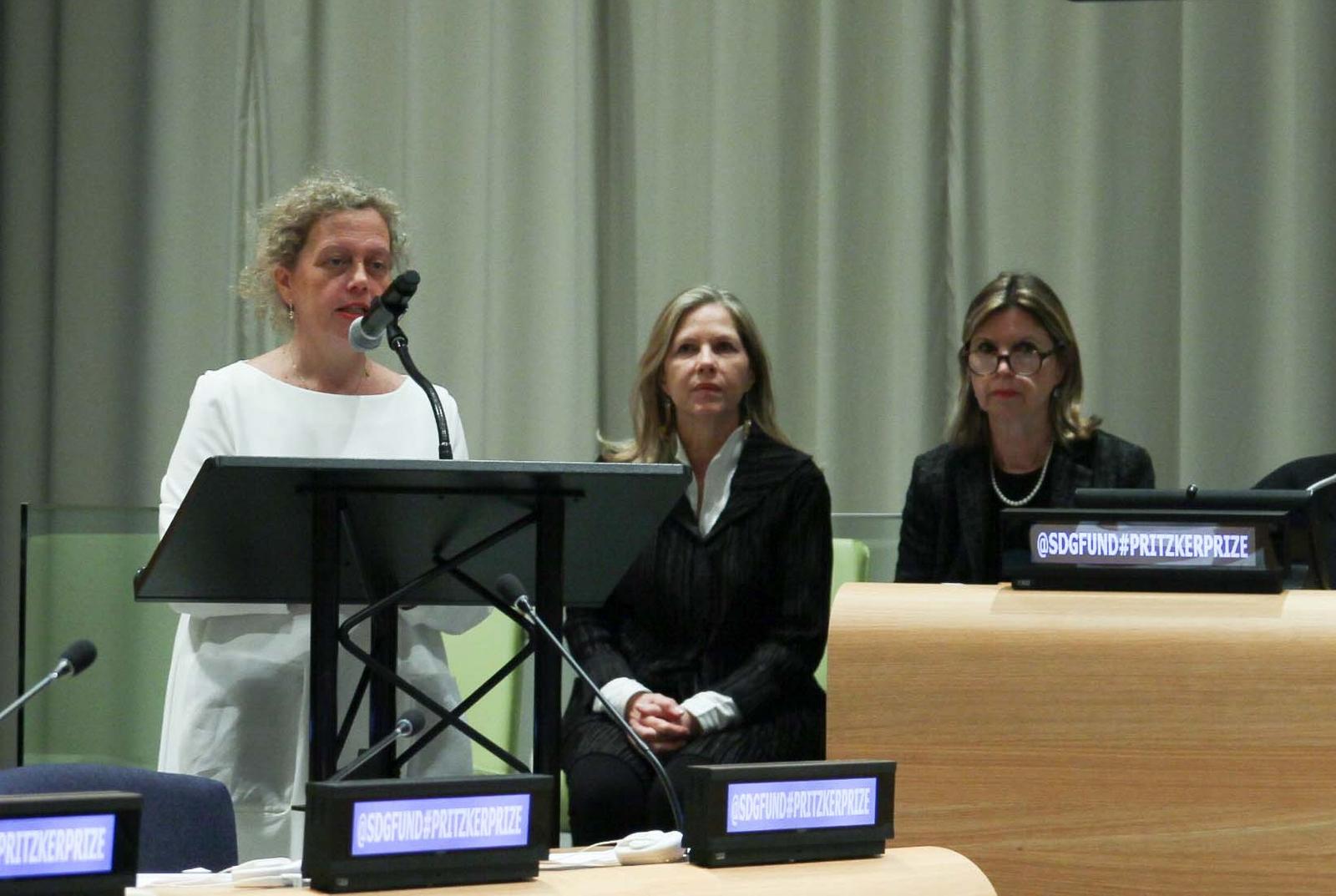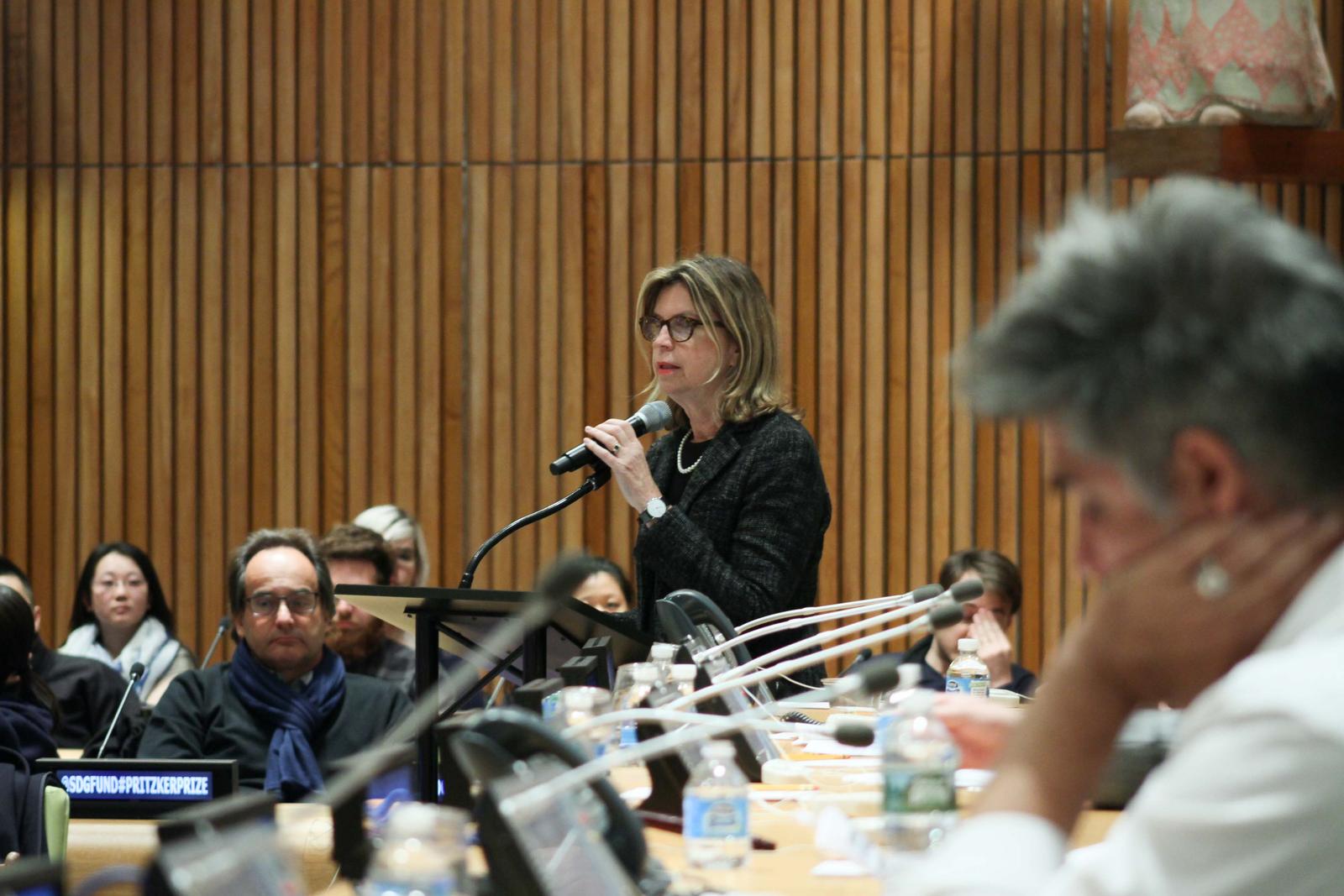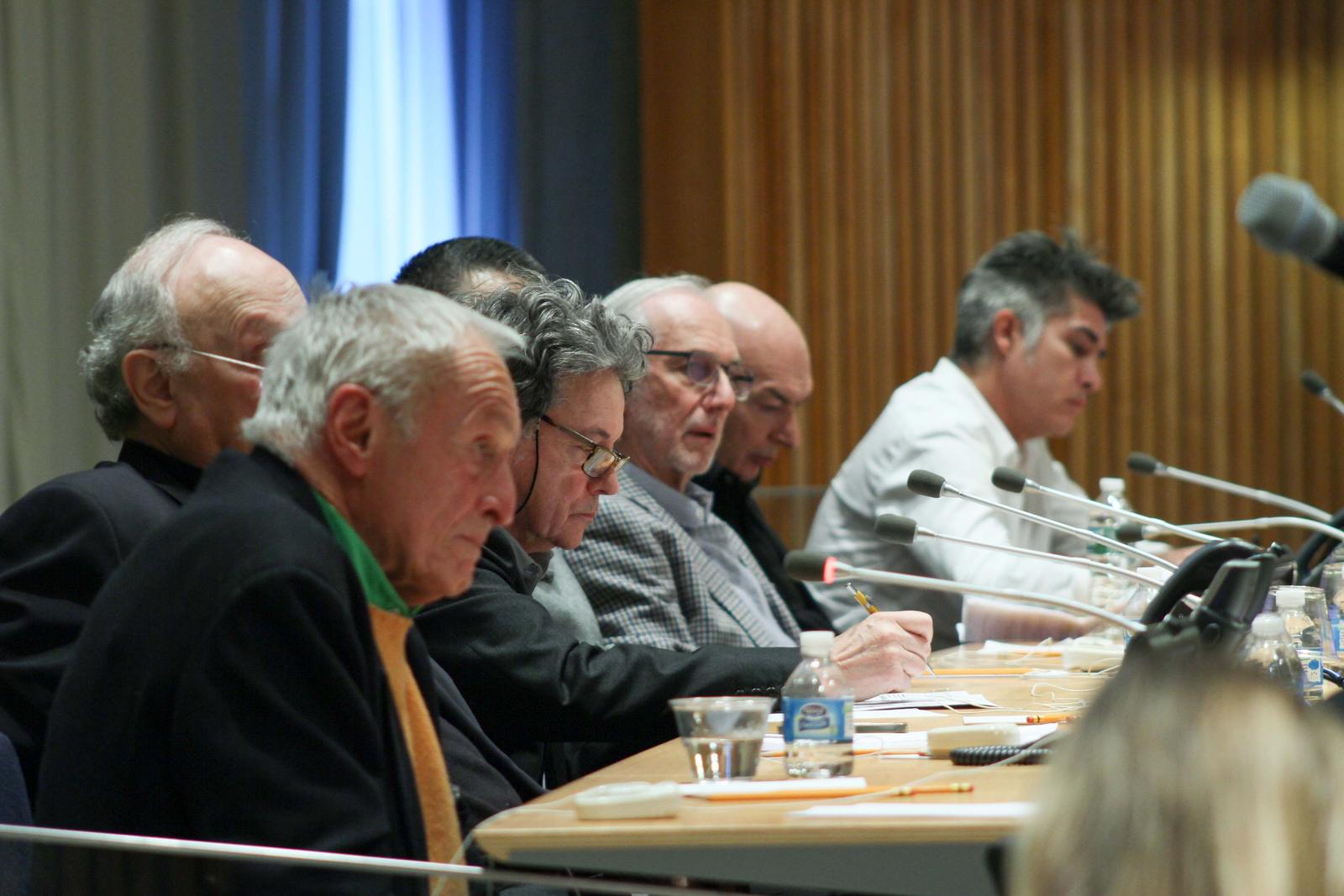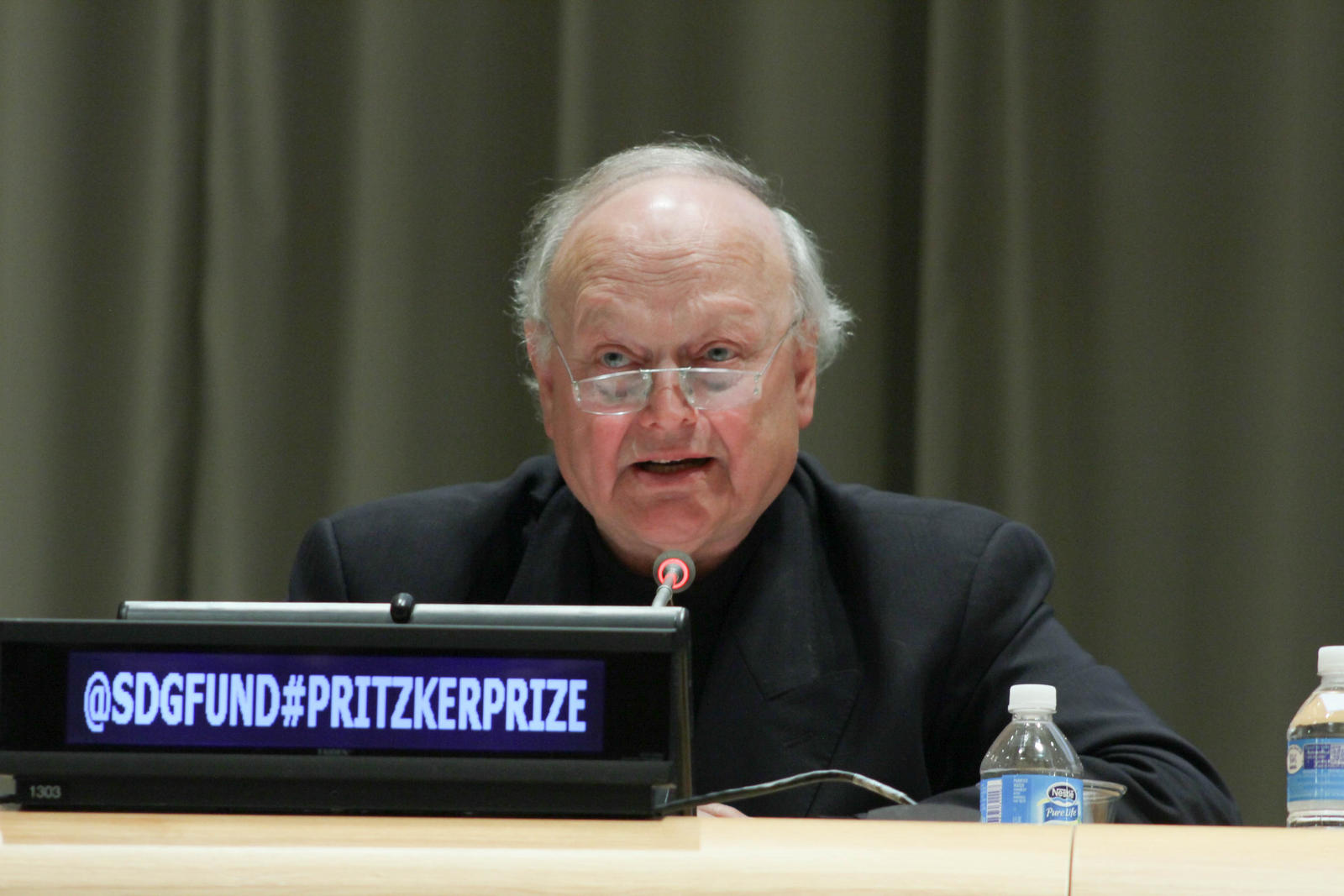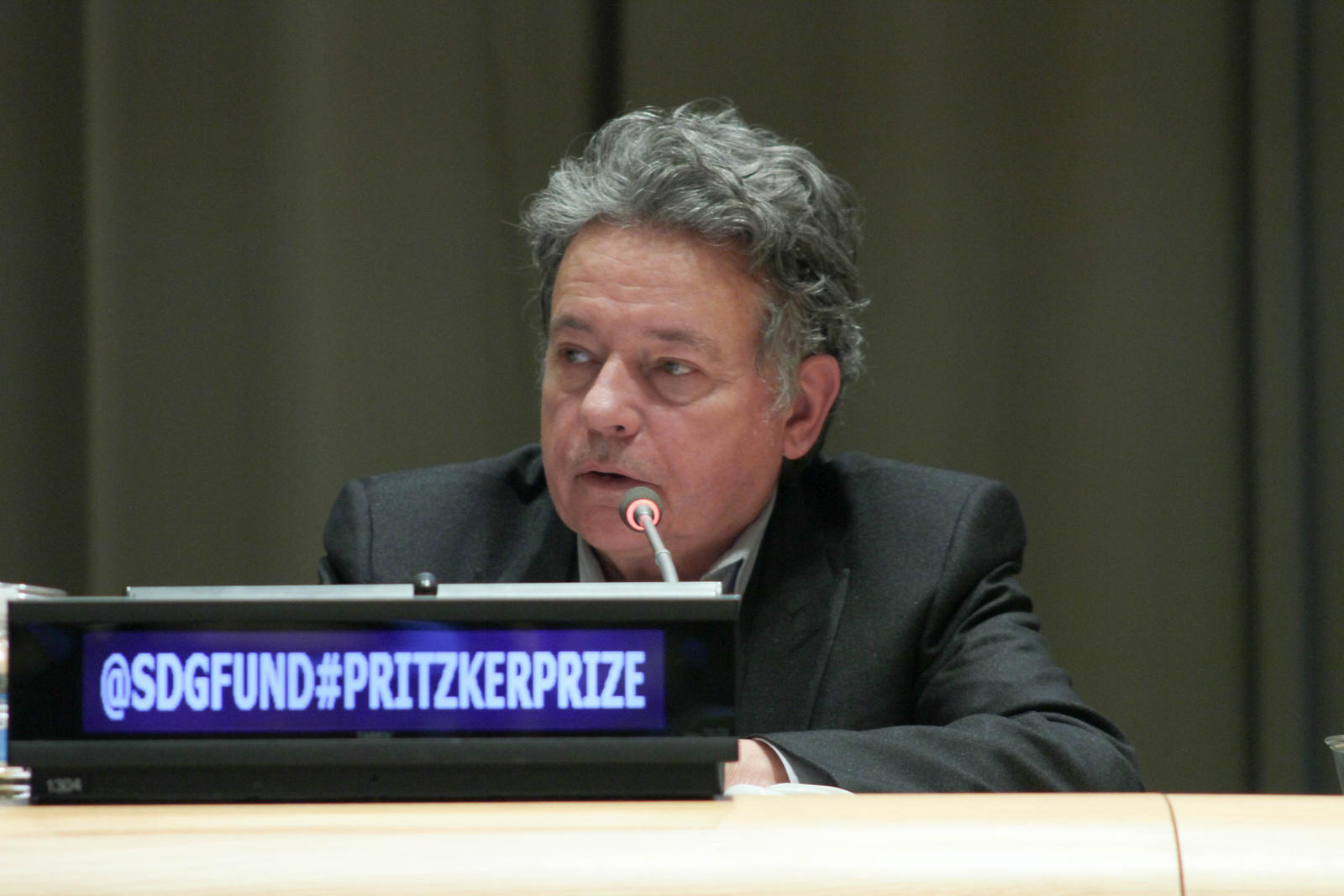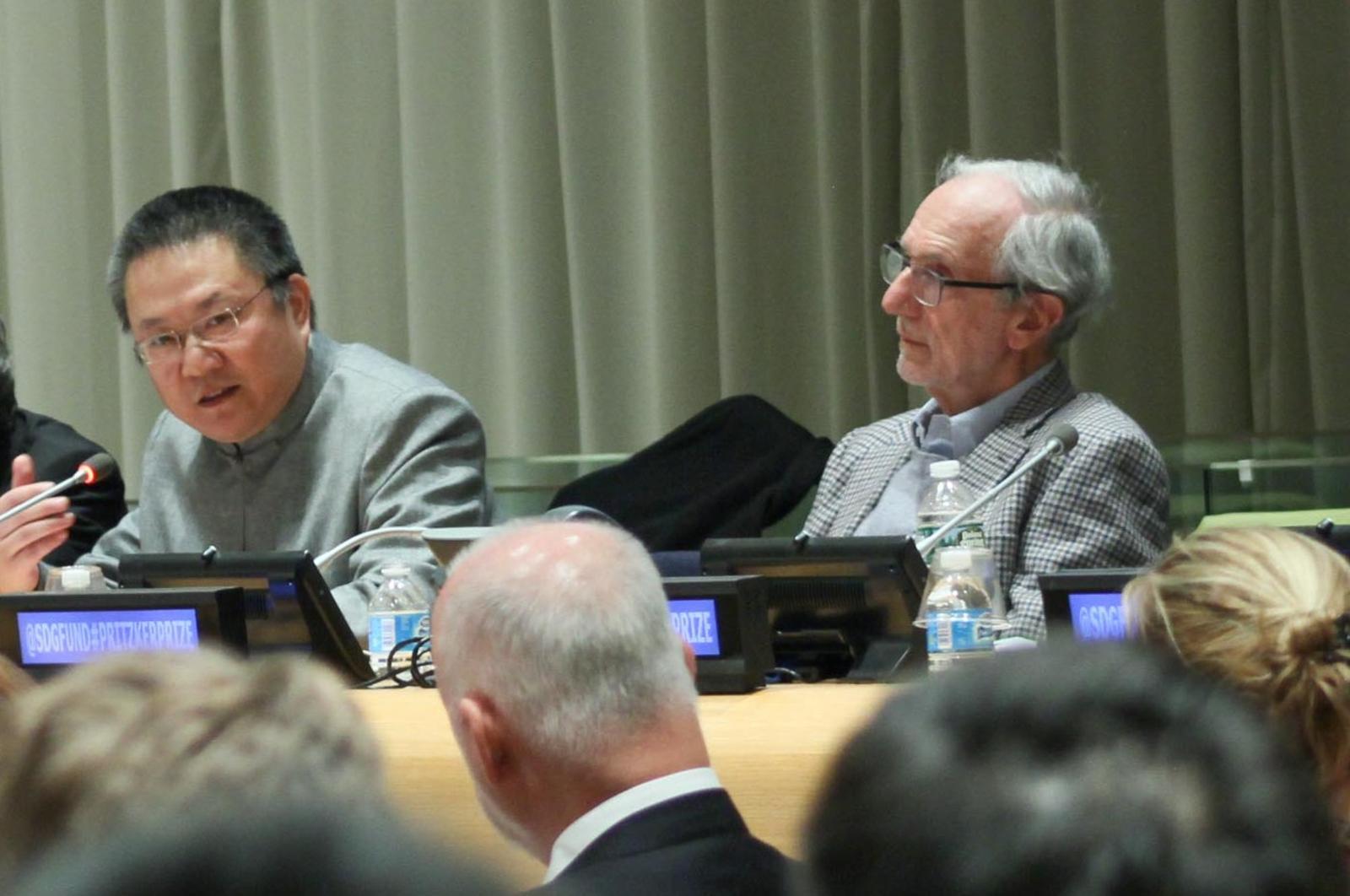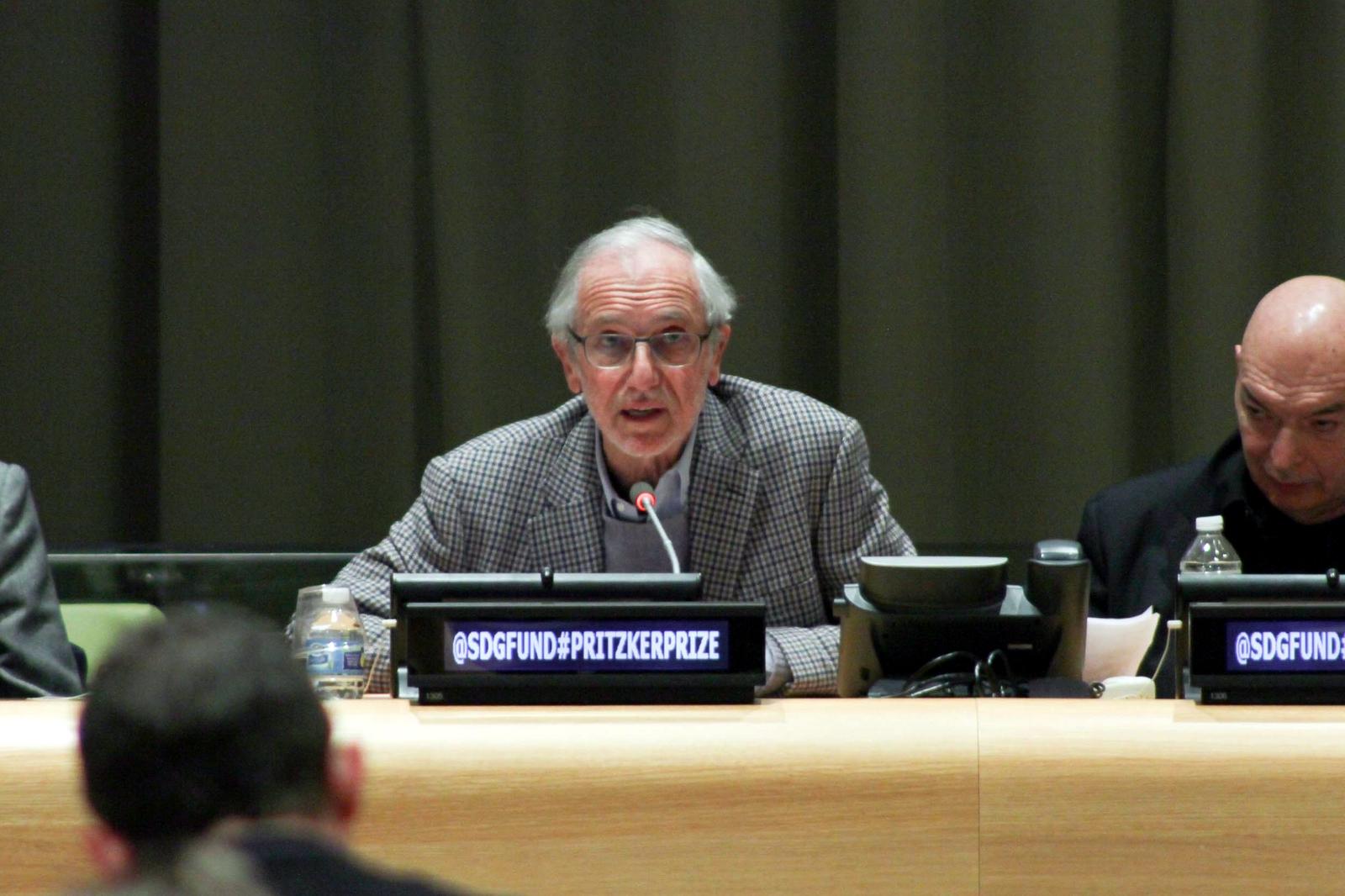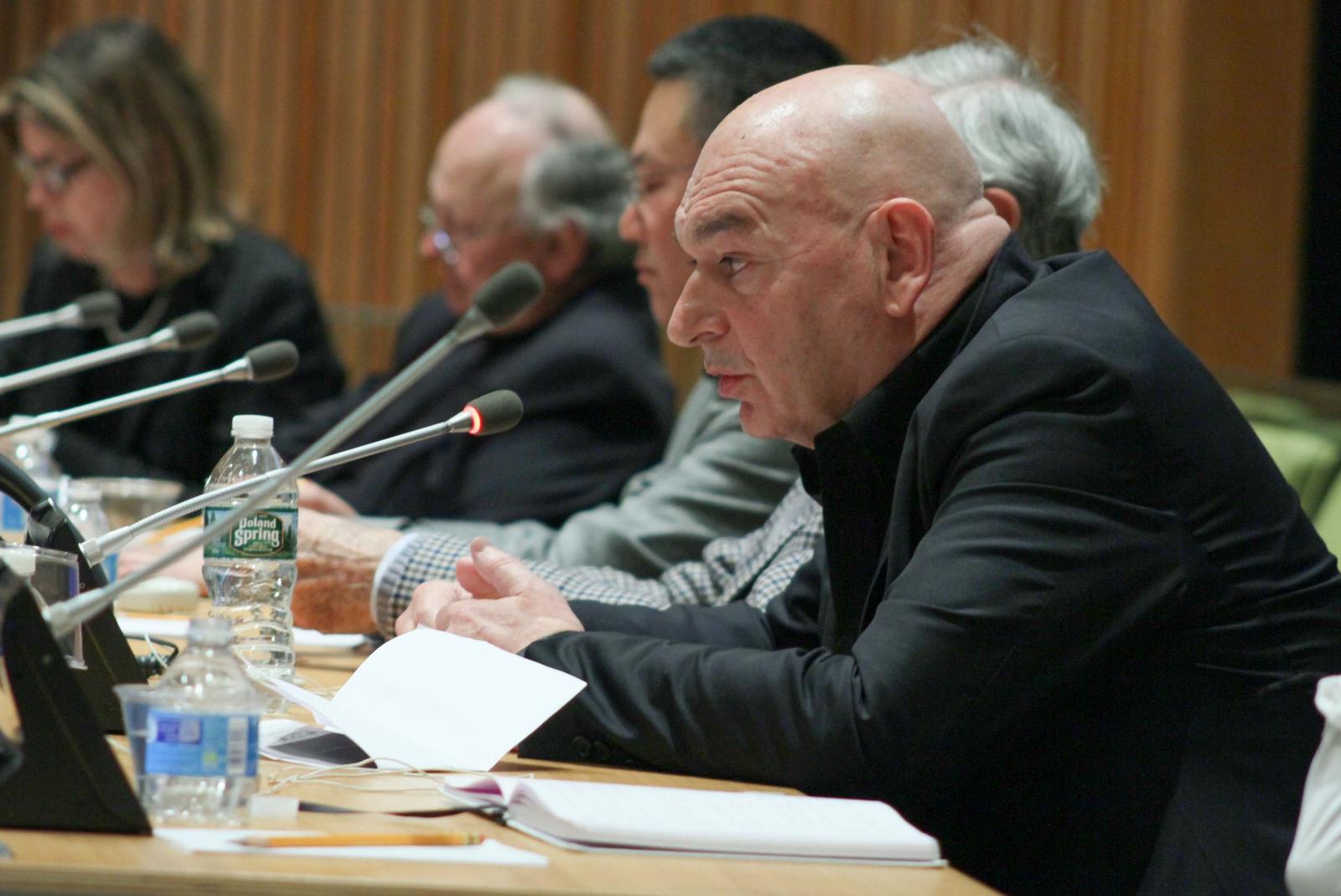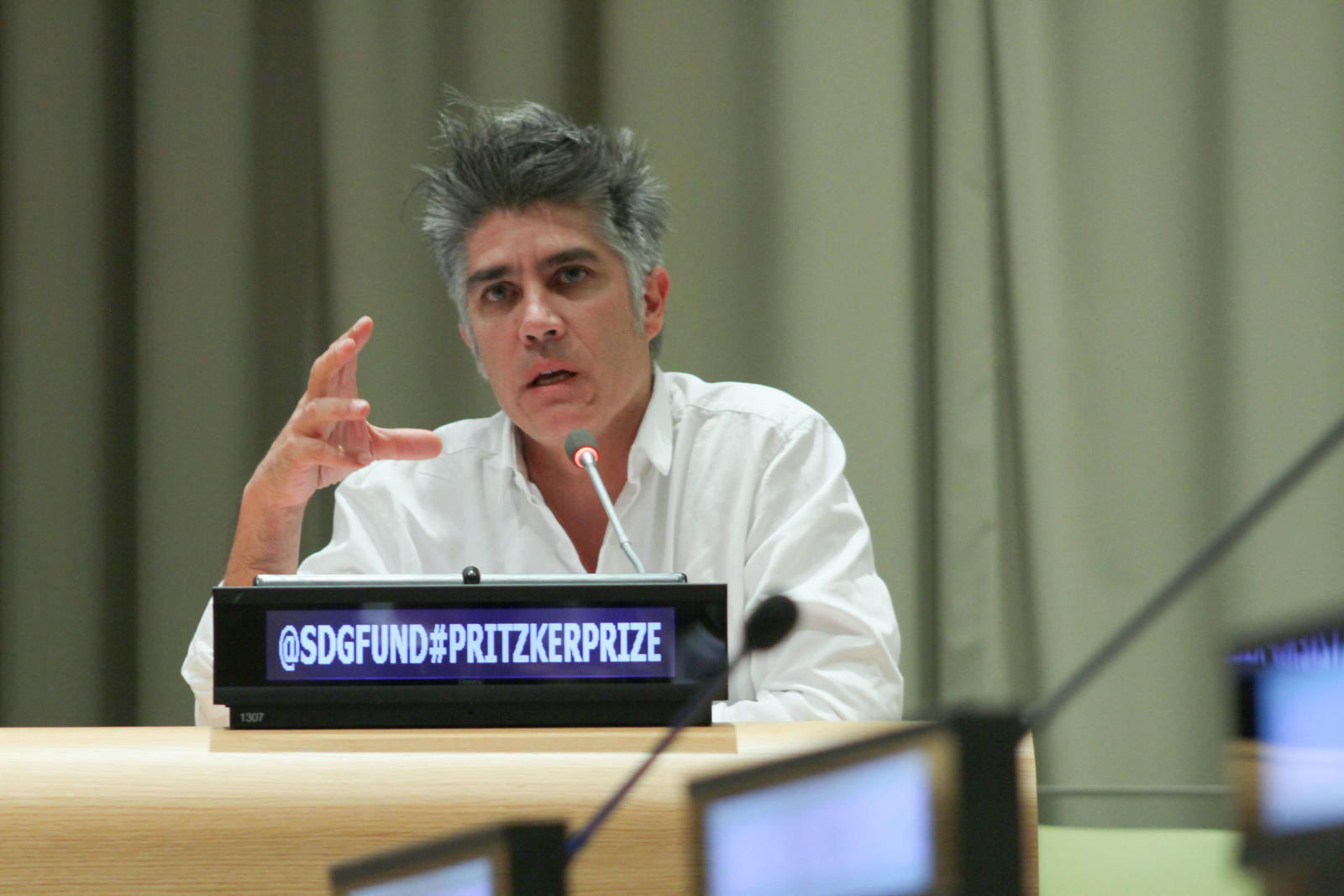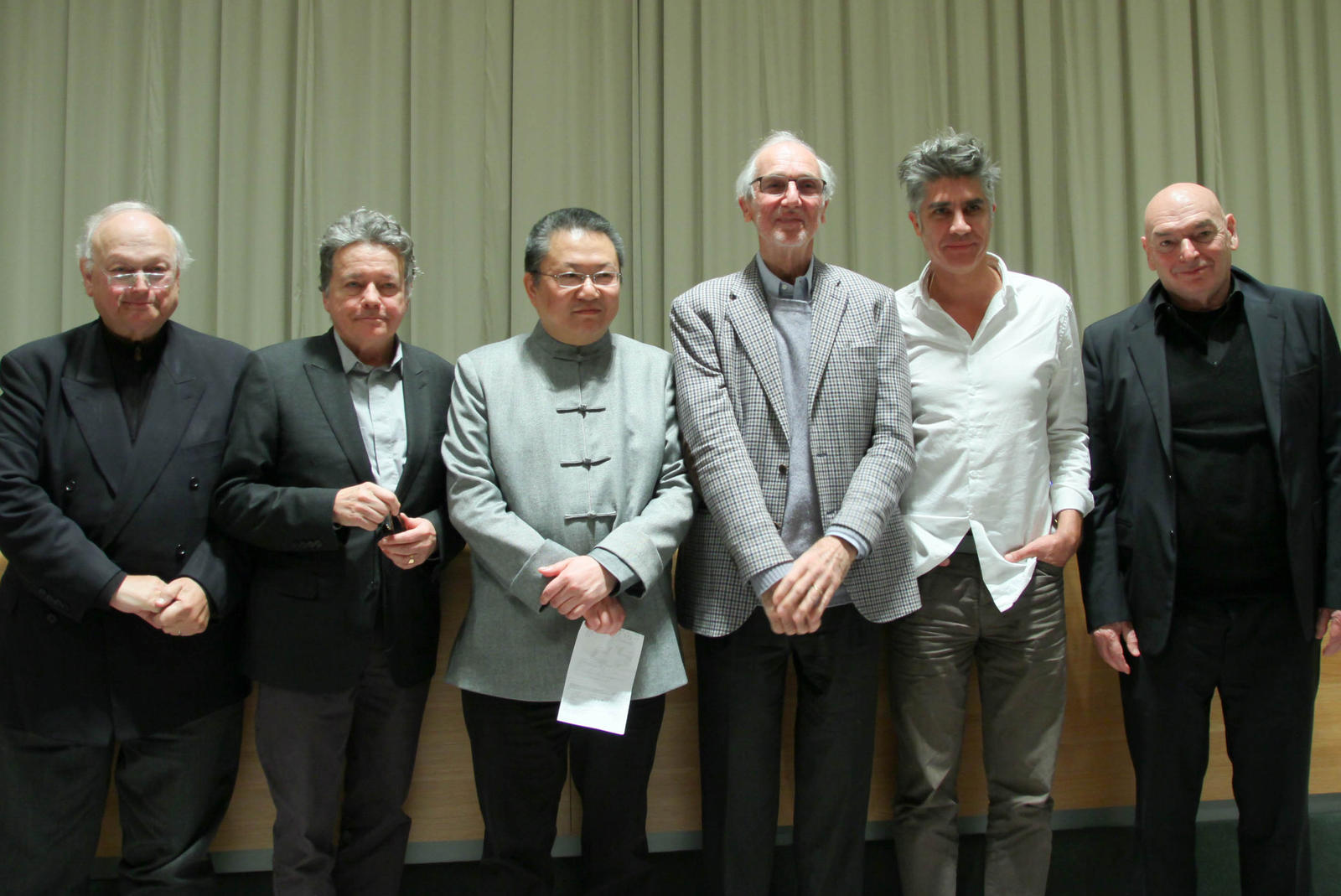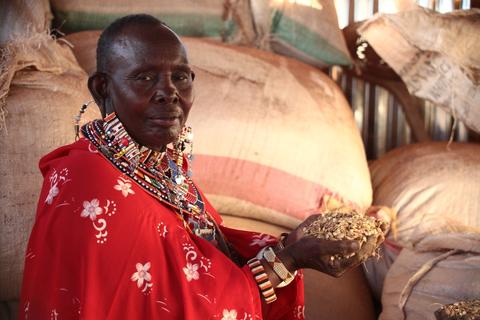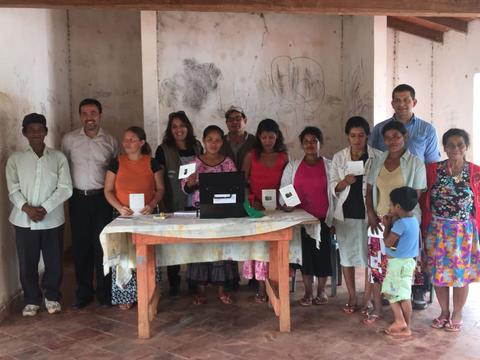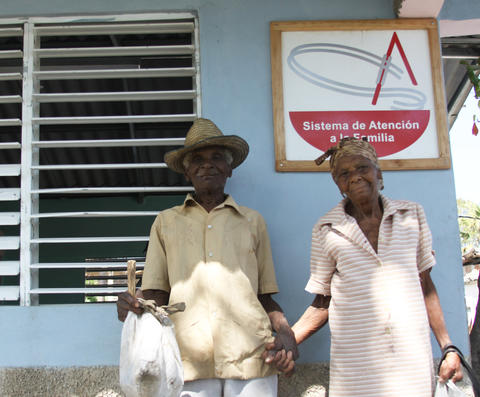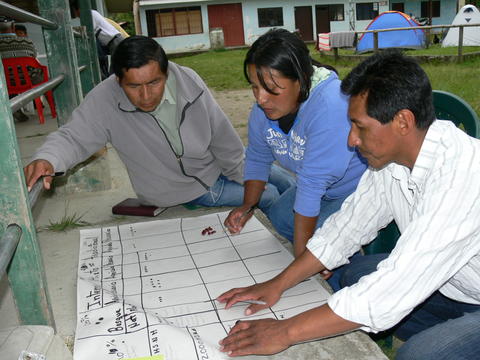April 12, 2016
Pritzker Laureates: "Architecture must contribute to improve peoples’ opportunities"
Seven of the world’s most renown architects -all of them Pritzker Architecture Prize Laureates -- gathered at the UN headquarters to discuss the role of architecture in contemporary society and how can it contribute to the new Sustainable Development Goals. This groundbreaking initiative organized by the UN Sustainable Development Goals Fund (SDGF) in collaboration with the Pritzker Architecture Prize, brought together a large and diverse audience in the majestic Trusteeship Council Chamber.
With the theme entitled Challenges ahead for the built environment, the open dialogue focused on this critical question providing insight from a panel of celebrated architects, including: Richard Rogers, Glenn Murcutt, Christian de Portzampac, Wang Shu, Renzo Piano, Jean Nouvel and this year’ Pritzker Laureate, Alejandro Aravena. The event followed the prestigious Pritzker Architecture Prize ceremony for Mr. Aravena that also took place at the iconic UN building on April, 4th.
This open dialogue was conceived as a starting point to explore potential synergies between the field of architecture and the Sustainable Development Goals. The SDG-F is pleased to announce its commitment to these issues and will continue to work on future initiatives that promote architects as "champions" for sustainable development.
After opening remarks by SDG-F director, Paloma Durán, and Pritzker Prize executive director, Martha Thorne, the event began with a brief introduction by moderator Cathleen McGuigan, Editor-in-Chief of Architectural Record on the role of Architecture.
Open Conversation with Pritzker Laureates
Rogers
Richard Rogers started saying that architects are not “mere decorators” and defined architecture as the art of “changing the environment by humanizing it”. For its crucial capacity to improve peoples’ livelihoods, Mr. Rogers considered that architecture “should be seen as important as health, education or food”.
Murcutt
In his intervention, Glen Mercutt defended the potential of architecture as a bridge between people. The Australian expert delivered an emotional speech where he encouraged to overcome the "fear" of immigration and to embrace the number of positive effects that the interaction of people and cultures can bring to societies. "Inclusive architecture can contribute to this phenomenon," he said.
De Portzampac
Christian de Portzampac spoke of the challenges in big cities, as the difference in life opportunities between urban centers and the periphery. In his view, the architects have a social responsibility to contribute to create opportunities in these places. "Ghettos offer few chance of transformation for the people", he said with some regret. De Portzampac underscored that architects should work, through their designs, to prevent the creation of new ghettos and isolated areas where "there is no links with life".
Shu
Architect Wang Shu provided insight into the field focusing his remarks on the notion of identity and the risk of losing it under a sometimes reckless lust for modernity. To illustrate this point he showcased several situations that are happening in his native China, for example, the construction of a new museum on the ruins of several towns. He also encouraged others in this space to consider and pushed for "cleaner environment and cleaner buildings. He also pointed out that the word cleaning is dangerous and warned if it becomes a clean place, New York would not be New York, for example.
Piano
Italian Renzo Piano returned on some of the issues put on the table by Portzamparc, the importance of cities and public spaces as fundamental prerequisites for democracy. Piano recalled that both words, city and civilization share the same Latin root: - città / civiltà- and advocated that architecture focus its efforts on its civic dimension against the aesthetic goal.
Nouvel
Jean Nouvel went a step further and urged architects to adopt a role as "social activists". The French expert harshly denounced what he understands to be as the "politicization and bureaucratization" of architecture: "always square, the square footage restricted, the density pre-determined". He instead suggested an imperative to "denounce" these type of situations, that in his own words will create cities "without humanism and poetry."
Aravena
Similar to his comments in an earlier UN press briefing Chilean Alejandro Aravena underscored what he considered to be one of today's main challenges which is in providing opportunities for the growing population that migrate to the cities which will by 2030 exceed five billion people. "The speed and the scale of this process is unprecedented in our history" he said.
To accommodate this new and urban population, Aravena estimated that we will need to build a city for one million people each week for the next fifteen years. Aravena, whose work is a perfect example of social commitment and opportunities for the most vulnerable closed the dialogue with an announcment that all his designs will be available for free to anyone who wants to make use of them. Reminding the large audience that indeed "It is time for action.”

